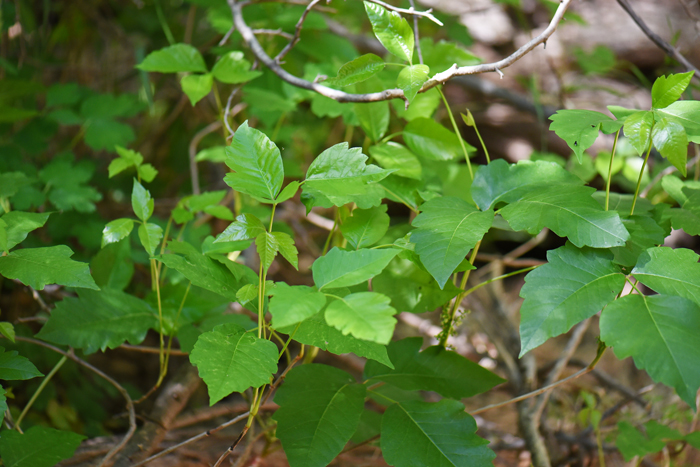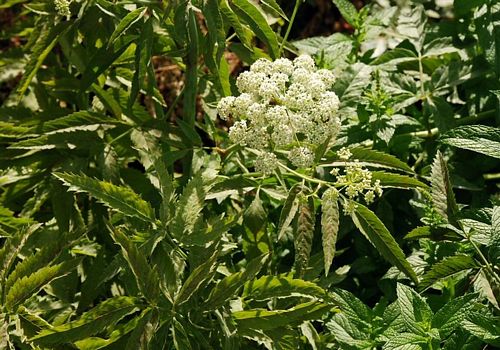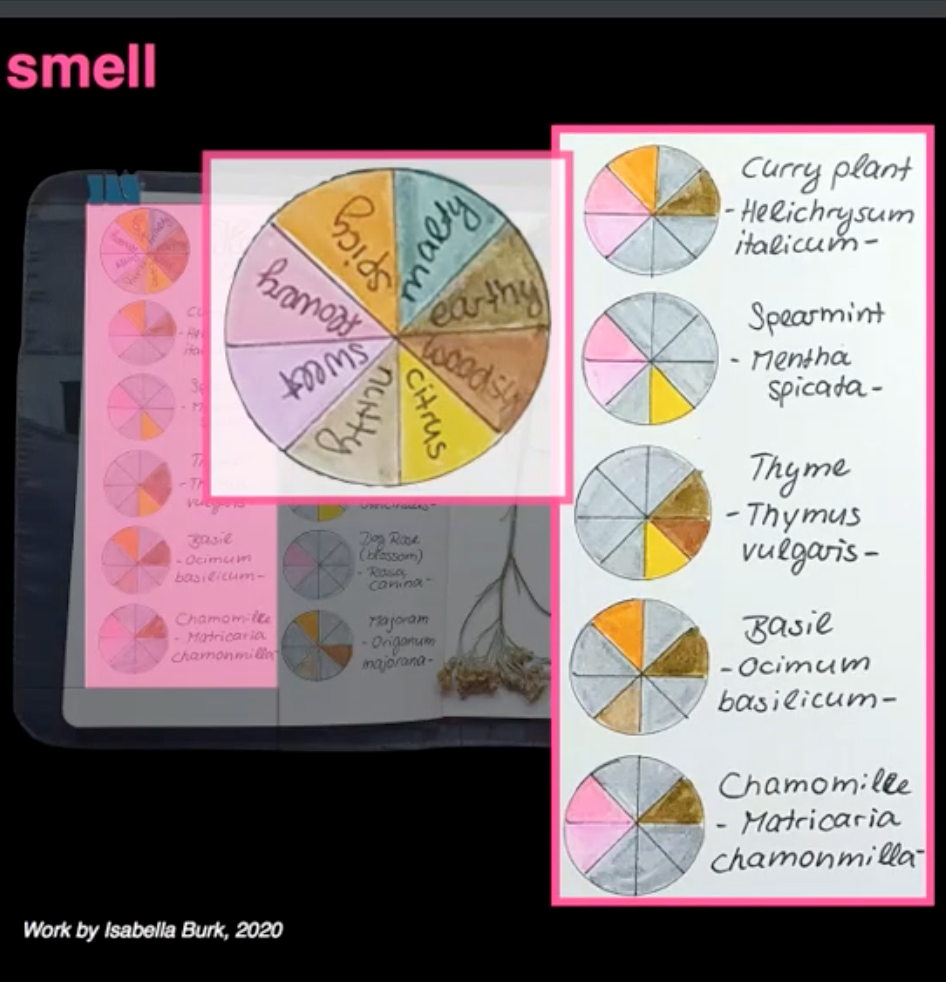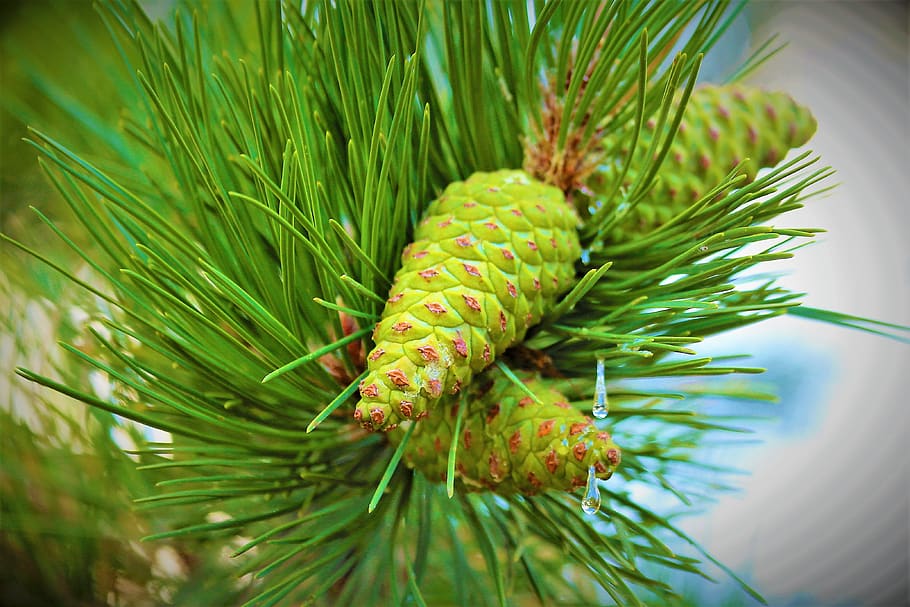By Sue Watts
The Nose Knows
It worked every time.
I’d be leading a group of third of fourth graders through the wetlands near Las Vegas, Nevada, and at some point I would have them stop by a group of creosote bushes and have each child cup their hands around the end of the branch and breathe on it. Every single time, these children of the desert would look up with wonder in their eyes and say “Rain”. Sure enough, when Mojave Desert dwellers catch that distinctive smell, they know a rare desert rain is nearby. Moisture activates the molecules that create the distinctive smells of the world.
I started this month’s article focusing on the senses of smell and taste, but then realized that many folks don’t feel like inhaling much at this pollen shedding time for junipers and pines. So, I’ve added the sense of touch to our perching platform exercises. All three bring us closer to the natural world than sight and sound, and so they have similar caveats: know what you’re dealing with.
Poison ivy is not to be touched or tasted or smelled. Shiny leaves of three….let them be (they’ll be leafing out in another month or so.
Keep your distance from water hemlock or anything that looks like it and grows near water in the summer time.
Since many truly poisonous weeds have non-toxic look-alikes, it’s best to follow a simple rule… don’t eat the wild vegetation (with the exception of a stray raspberry or two).


Smell—known as a molecular sense, our sense of smell is 10,000 times more sensitive than any of our other senses. It can be honed if we make an effort to intentionally focus on it:
- Practice on something safe and familiar, like herbs or food (like ice cream).
- When you first walk outside, sniff the air quickly and see if you can sense a difference in the air from that in your house.
- See if you can focus on a smell’s attributes: how complex is it, where does it seem to be coming from, how long does it last?
- While sitting:
- Close your eyes and inhale deeply. Get the molecules making up unique scents up into your nostrils.
- If it is safe to do so, pick up something and rub or crush it; then smell your fingers.
- Notice if there is any change if you moisten the area twixt your nose and mouth
- Look before you sniff: any bees or bugs?
- While walking:
- Try to notice at least four or five distinct smells (you might want to note the location, intensity, and duration as well as your own reactions).
- Try to choose a scent that summarizes your walk.

Isabella Burk used a pie chart and 8 adjectives to help her refine her vocabulary and sense of smell … to create a record of her explorations of herbs (earthy, woodsy, citrusy, nutty, sweet, flowery, spicy, malty).
Taste—the other molecular sense, but much more limited (scientists are exploring ways to differentiate tastes beyond the usual sweet, sour, salty, bitter, savory, umami (a rich, full taste), cool (like mint), and hot (like chili peppers). The tastes we often experience result from unique combinations of molecules aided by the sense of smell. This is a sense to be whetted at home… remember: don’t eat the vegetation!
To increase your sense of taste, take a cue from wine tasters (or my son’s approach to ice cream):
- Smell it first.
- Hold it on your tongue for a time.
- Roll it around in your mouth.
- Focus on characteristics like mouthfeel, flavor, intensity, complexity, and duration.
- For more ideas, consult The Flavour Thesaurus by Niki Segnit.
Touch—the sensation we experience through our body’s largest organ and one of the most important senses for our health and well-being.
Kate Rutter has a ‘touching’ exercise she shared at a recent journaling conference:
- First of all, spend a few minutes exploring an object with your eyes closed.
- Then, spend one minute describing its feel…don’t stop with the easy words…keep going and extending your vocabulary.
- Depict it using picture words like …
smoooooth
or curly
or tangled
- Use symbols to capture the feeling: \/\/\/\/\/\/\/ for bumpy or ridged. You can define what you sense along a continuum:
hard—————-*————-soft
light—–*————————heavy
smooth———————-*—touch
What a world we can experience through our senses by focusing on each one individually.
My other favorite smelling activity involves placing your nose close to the sun-warmed bark of a Ponderosa pine; the tall trees around here with flaky, orange-colored bark. I tried it once on a family most of whom were utterly bored (!!???) by a trail into the Grand Canyon. They had stopped to debate whether they would go further, and the teenagers and dad had had enough of this nature stuff. I paused near them and began smelling a Ponderosa (as you get older, your inhibitions ease). One girl asked what I was doing and I replied that I was trying to decide whether the tree smelled like butterscotch or vanilla. She stepped up and opined that it smelled like butterscotch. Her sister smelled vanilla. I glanced back after we had left them…the father had his nose to the bark. You never know what open door will bring you to a new sensual experience.

